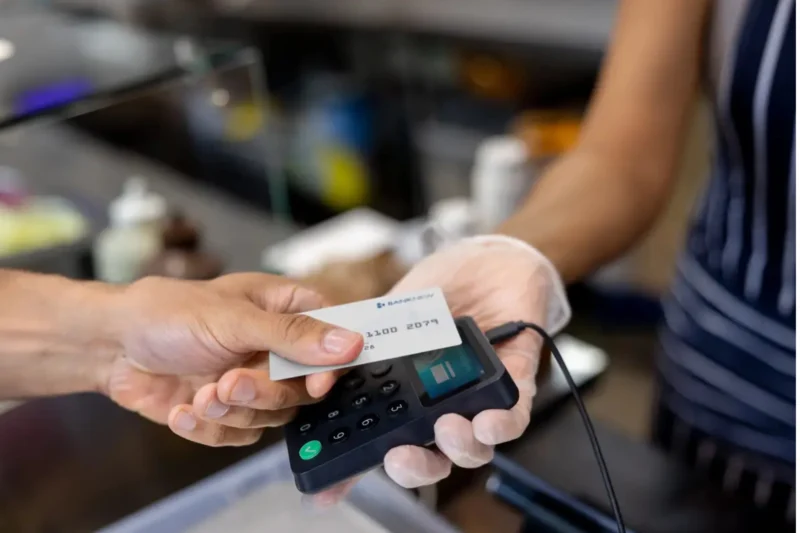Tipping culture in the United States has long been a cornerstone of the service industry, but it’s facing a reckoning. Digital payment prompts, rising economic pressures, and tipping expectations creeping into new settings have frustrated many Americans, prompting a noticeable shift in behavior. Recent data reveals a decline in average tips, while surveys and social media paint a picture of a nation increasingly weary of what some call “tip fatigue.”
According to a May 6, 2025, report from The Guardian, the average tip at full-service restaurants dropped to 19.3% in the fourth quarter of 2024, down from 19.9% in Q1 2021. This marks a six-year low, departing from the traditional 20% tipping norm. Industry reports, such as those from Toast, corroborate this downward trend, though specific figures for Q1 2025 remain unavailable, suggesting the shift may be ongoing.
Surveys reinforce this narrative. A March 2025 Food & Wine survey found that 90% of Americans believe tipping culture has become excessive, up from 75% the previous year. Meanwhile, a 2023 Pew Research Center survey noted that 72% of U.S. adults feel tipping is expected in more places today than five years ago—a perception that has only intensified. These statistics highlight a growing resistance to the expanding scope of tipping.
The Current State of Tipping Frustration
American frustration with tipping has reached a boiling point. A WalletHub survey reveals that nearly nine in ten Americans feel tipping expectations have spiraled beyond reason, a sharp departure from their once-accepted role in service culture. This resentment isn’t just about frequency—it’s rooted in a belief that businesses are offloading wage responsibilities onto customers.
Technology has amplified this discontent. Digital payment screens with preset tip options have spread beyond restaurants to coffee shops, takeout counters, and even self-service kiosks. Cortney Norris, an assistant professor of hospitality and tourism management at Oklahoma State University, notes,
“Tip requests have become more pervasive because of technological advancements that allow tip screens to be added to any point of sale system.”
Yet, this push is backfiring: 30% of Americans tip less when faced with these prompts, compared to just 14% who tip more, signaling a rejection of perceived pressure.

Generational Divide in Tipping Behaviors
Tipping attitudes and actions vary starkly across generations. Older Americans—baby boomers (72%) and Generation X (62%)—are the most critical of modern tipping culture, far outpacing the dissatisfaction of Generation Z (45%) and millennials (51%). But behavior tells a different story.
While 86% of boomers and 78% of Gen X consistently tip restaurant servers, only 35% of Gen Z and 56% of millennials do the same. This gap suggests that younger generations may accept tipping in theory but are less bound by tradition.
As younger consumers, with their inconsistent tipping habits, become the majority, the economic model supporting service workers could erode, forcing businesses to rethink compensation strategies.

Economic Pressures and Tipping Fatigue
Inflation has strained budgets, with nearly two-thirds of Americans cutting tips to offset rising costs. Higher restaurant prices compound the issue—since tips are percentage-based, the dollar amount expected grows even if the rate stays steady, stretching consumers thin.
“Tipping fatigue” is another culprit. The relentless spread of tip requests across diverse settings has left consumers exasperated, feeling nickel-and-dimed at every turn. For many, what was once a gesture of appreciation has become an inescapable obligation, prompting reductions even in traditional tipping scenarios.

The Post-Pandemic Service Landscape
The pandemic initially sparked a tipping surge as Americans rewarded frontline workers, pushing averages to 19.9%. But that goodwill has faded. Labor shortages have strained service quality, leaving customers less inclined to tip generously for subpar experiences. Meanwhile, the rise of contactless payments has stripped tipping of its personal touch. Digital transactions, while efficient, lack the human connection that once drove generosity, turning tipping into a colder, more mechanical act.
Industry Adaptation and Future Implications
Restaurants are scrambling to adapt. Some are testing service-inclusive pricing, embedding gratuities into menu costs to stabilize worker pay and clarify expenses for diners. Others leverage AI and analytics to boost service quality, hoping that better experiences sustain tipping. Subscription dining models and personalized service could also shift how value is exchanged, moving away from transaction-based tips.
These innovations carry risks—higher menu prices might deter customers, and tech must enhance, not replace, the human element diners value. Still, they reflect an industry at a crossroads, seeking sustainable paths.
The drop to a 19.3% tipping average isn’t just a statistic—it’s a symptom of deeper unrest. With 90% of Americans frustrated, the current model faces a reckoning. Economic pressures, tech-driven overreach, and shifting generational norms are exposing its flaws.
The industry must evolve, likely toward transparent pricing and fair wages that don’t rely so heavily on consumer discretion. As younger, less consistent tippers take over, this shift feels inevitable. The challenge—and opportunity—lies in balancing worker needs, business viability, and customer satisfaction in a rapidly changing world.


